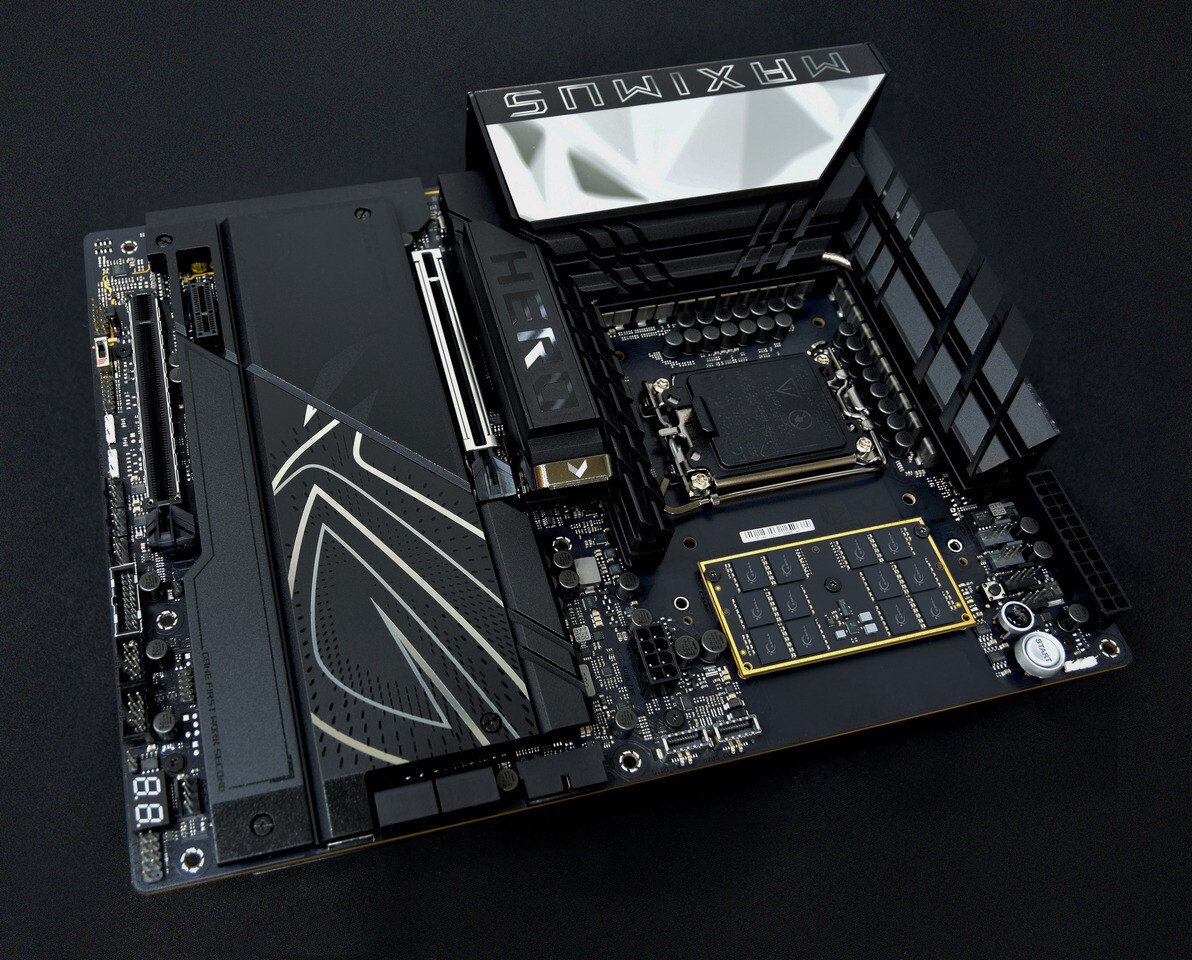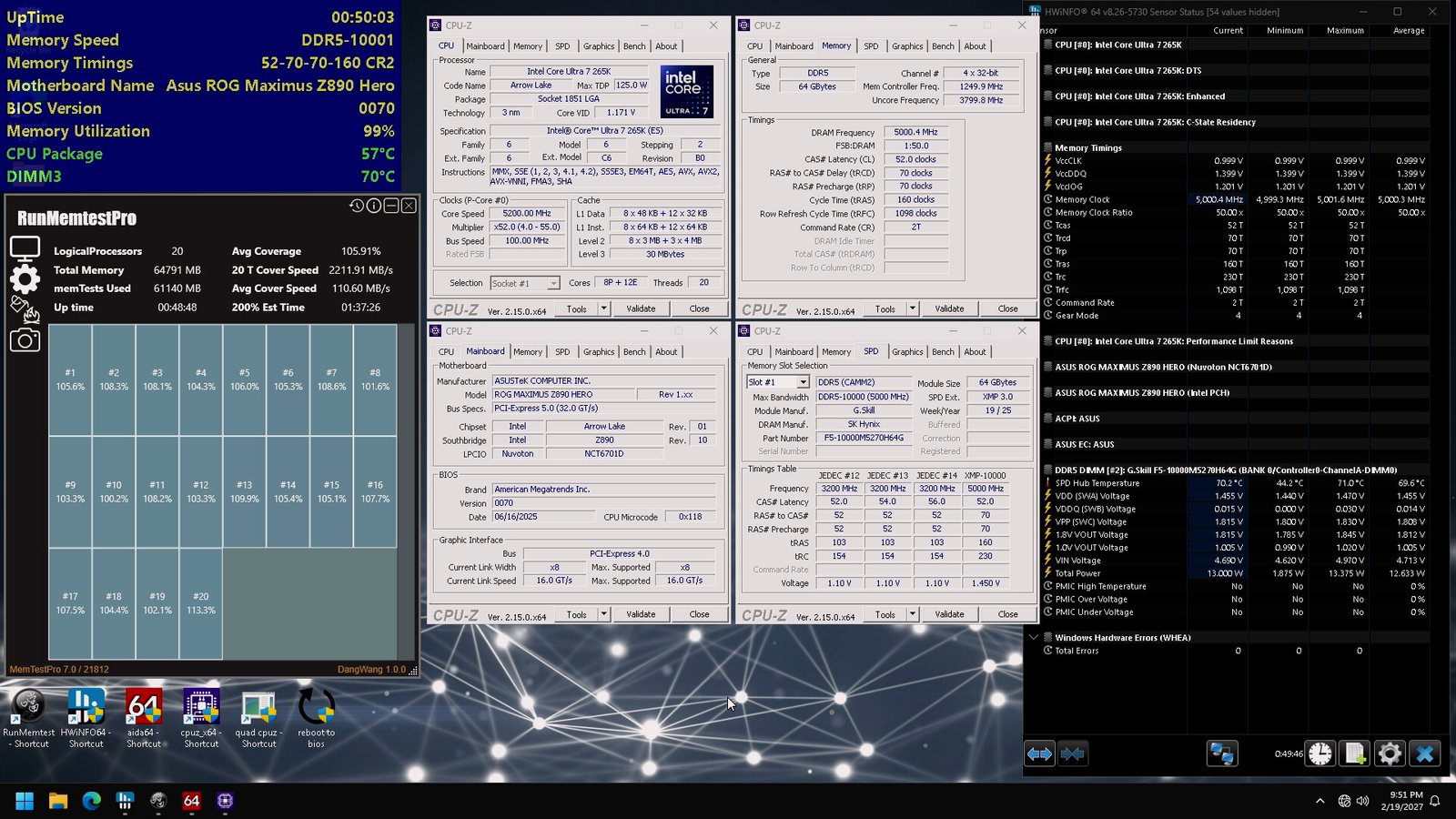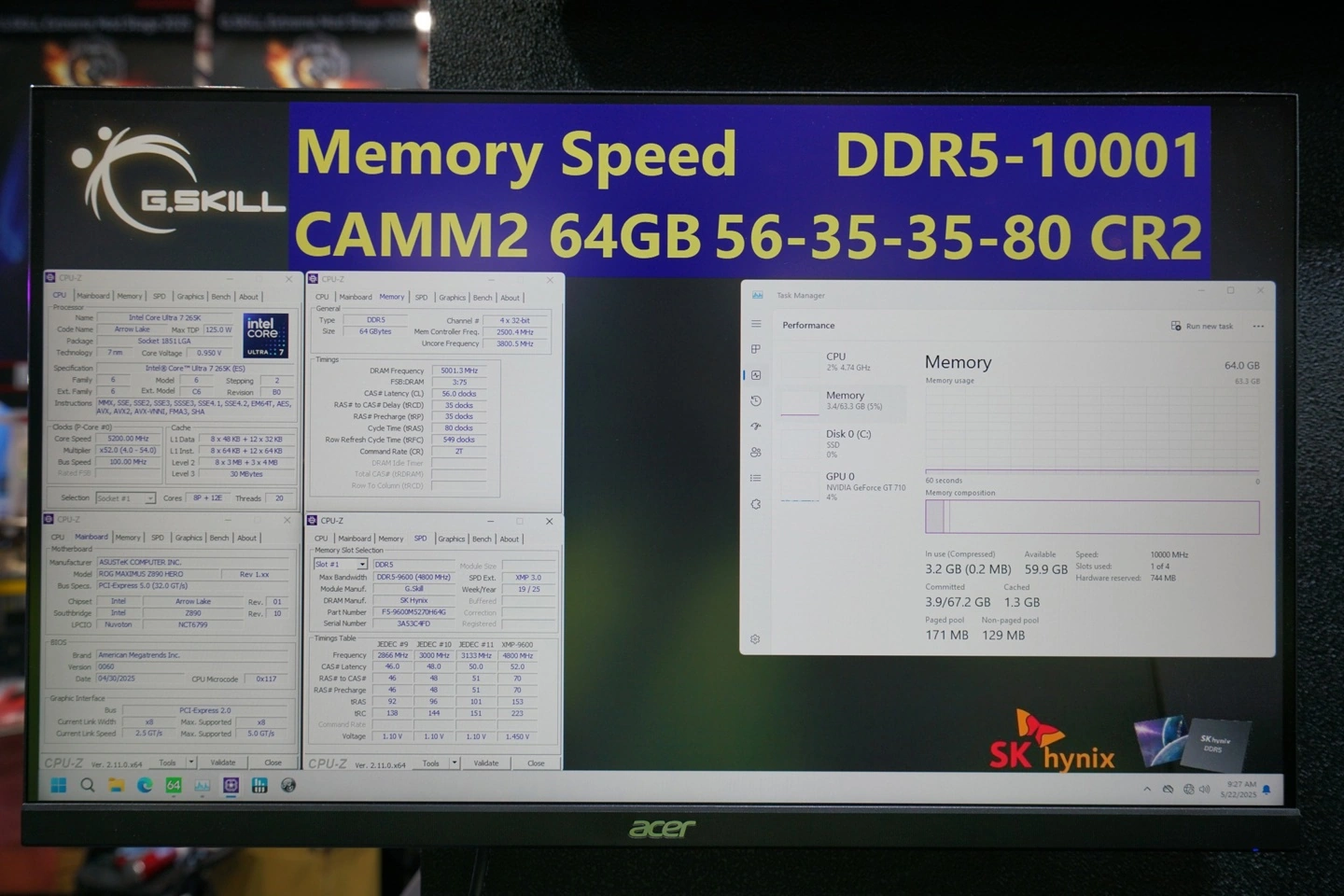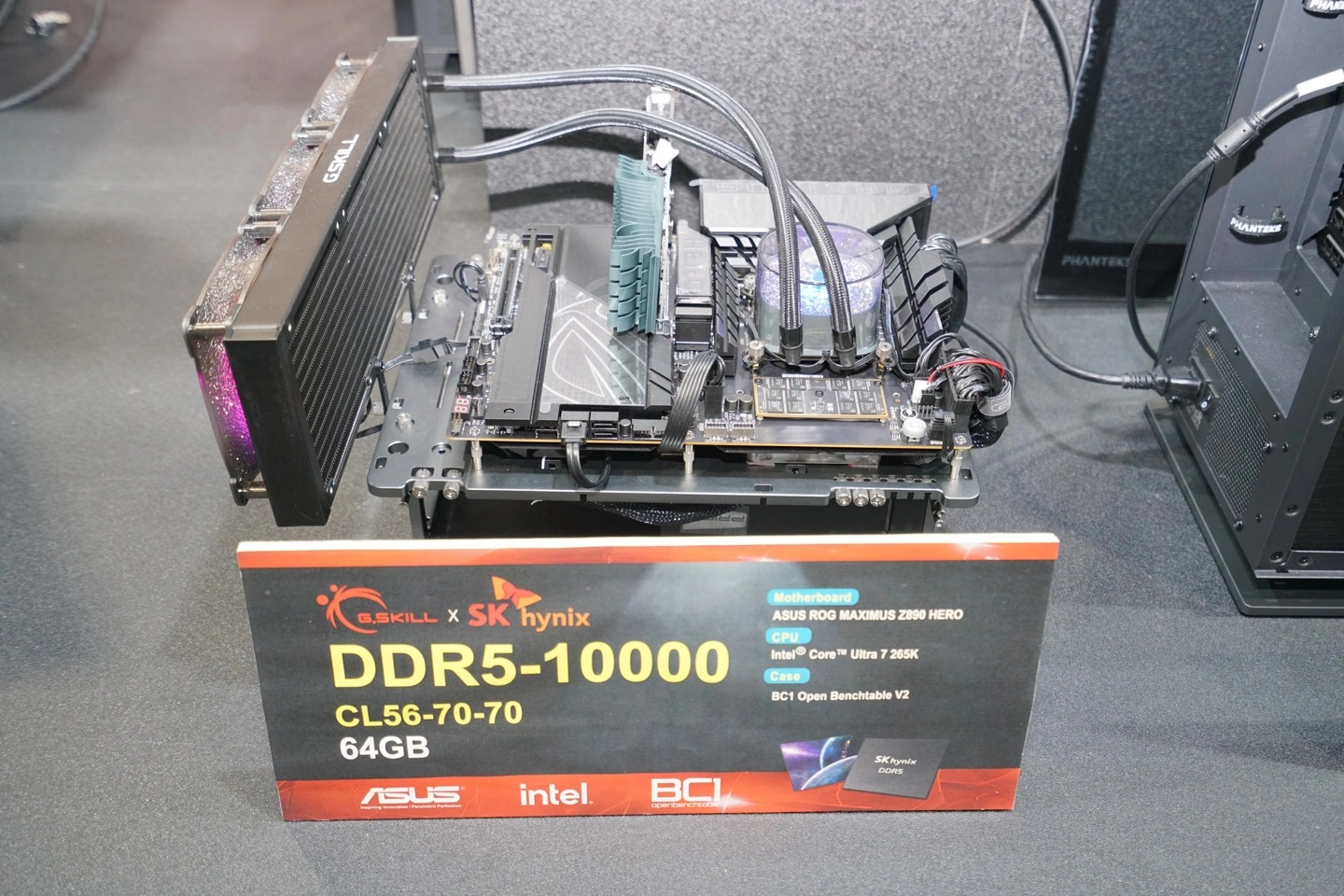G.Skill has officially announced a new overclocking milestone for DDR5 CAMM2 memory modules in collaboration with the ASUS Republic of Gamers (ROG) team. The companies successfully pushed a 64GB DDR5 CAMM2 module to 10000MT/s with a tightened CAS latency of CL52 on the ASUS ROG MAXIMUS Z890 HERO CAMM2 motherboard. This achievement was validated through the Memtest stability test, confirming both the performance and reliability of the configuration.

This result marks a significant step forward for CAMM2, a relatively new memory interface specification being positioned as a potential alternative to traditional DIMM slots for high-performance desktop platforms. According to G.SKILL, the success of this overclocking effort is the result of close engineering collaboration between the company and ASUS’s ROG division, aimed at exploring the technical ceiling of the CAMM2 standard on Intel platforms.
Earlier in May, during the COMPUTEX 2025 event held in Taipei, G.SKILL demonstrated CAMM2 DDR5-10000 speeds on the same ROG MAXIMUS Z890 HERO CAMM2 motherboard. However, that showcase used a looser timing configuration of CL56. The latest validation at CL52 reflects ongoing refinement and tuning that improve both latency and memory bandwidth, pushing performance boundaries while maintaining system stability.

CAMM2 (Compression Attached Memory Module 2) is designed to offer improved signal integrity and better power delivery compared to traditional DIMM-based configurations. Originally introduced for laptops to save space, the CAMM2 form factor is now being evaluated for high-performance desktop use due to its compact design and potential for greater speed scaling. Unlike standard DIMMs, CAMM2 modules use a land grid array (LGA)-style interface, which can lead to reduced signal interference and more efficient memory routing on the motherboard PCB.


G.SKILL emphasized that the results of this joint effort validate the overclocking capability and thermal headroom of CAMM2 memory, showing promise for future platform-level adoption. The company noted that this performance benchmark provides a solid technical reference point for upcoming products targeting enthusiast and workstation users who demand high memory throughput with low latency.
Both G.SKILL and ASUS ROG are expected to continue working together to optimize CAMM2 implementations for future Intel platforms. With memory speeds and interface standards evolving rapidly, results like this contribute to defining what the next generation of desktop memory solutions could look like.







